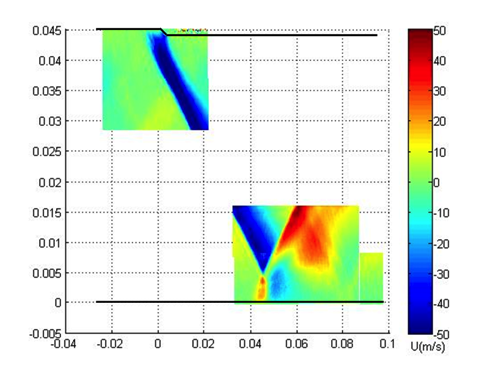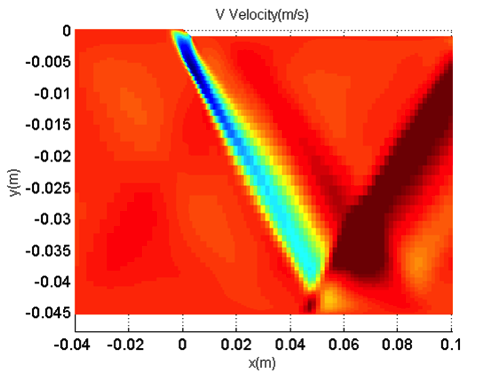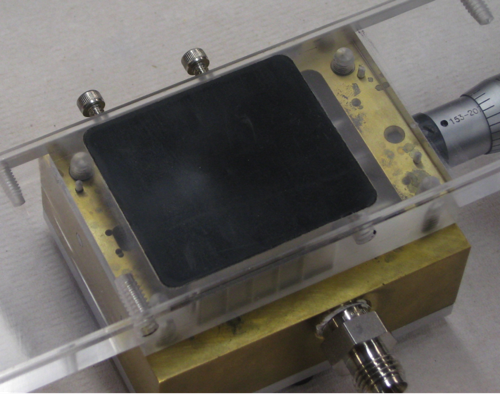| Shock-boundary layer interactions (SBLIs) are common in supersonic flows, but remain a significant challenge to modern CFD. The ability of simulations to realistically model real systems with SBLIs is uncertain, and the utility of these simulations for design purposes in high-speed systems is limited. Traditional experiments and simulations generally focus on a single design condition or a limited set of conditions, and use those subsets for validation. Real systems, however, are not limited to a single set of boundary conditions, particularly in the case of a complicated system like a scramjet engine. The goal of this experiment is to perform a Monte Carlo type investigation of the sensitivity of the shock-boundary layer interaction to the upstream boundary condition.
All measurements in this experiment are performed in a Mach 2 wind tunnel. |
| |
| |
| Experimental results |
| The first step in the Monte Carlo experiment is to measure the "base case", or the unperturbed case. Both pressure and 2D-PIV data have been acquired. Below is a sample image of the wall-normal component of PIV data - this is a composite image of approximately 25 distinct measurement regions that have been tiled together (with no interpolation or filtering). The velocity change across the shock can be clearly seen, as can the change across the expansion wave. The velocity jump on the bottom wall can also be observed - this is effectively a reflected shock problem. The separation can be seen to be significantly larger than the separation on the top wall. On the bottom wall, the flow can be seen to push up from the wall as it separates (red segment near wall), then drive back toward the wall during reattachment (blue segment near wall). |
| |
|
The base case has also been simulated using both 2D and 3D RANS with the Spalart Allmaras model. A snapshot of one result is shown below for the same location as the experimental result - note that the color scales do not match. Detailed quantitative comparisons have not been completed. However, there are several observations of interest from the qualitative comparison. The first is that the CFD appears to underpredict the size of the separation. Part of this discrepancy may be due to PIV effects, but some of it is due to limitations of the CFD. Another point is that the CFD prediction places the interaction on the bottom wall at a location different by 2-3mm from the experiment. Finally, the experiment shows a more complex interaction near the wedge than the simulation. |
| |

 |
Fig. 1: Wall-normal velocity component in a shock-boundary layer interaction; PIV measurements (left) and RANS simulation (right). Note that different color scales were used. |
| |
| |
| Monte Carlo experiment |
| The next step in the experiment is the introduction of perturbations into the system. This will be done via the introduction of a perturbing section into the bottom wall. This segment will be located upstream of the wedge such that shocks caused by the bumps will impinge at or near the wedge on the upper wall. A modified 2D simulation was used to determine that this location would cause the largest change in the flow. The PIV data acquisition for this portion of the experiment will be limited to a single region in order to allow the acquisition of dozens (or more) of distinct cases. An image of the perturbation section is shown below. Bumps of different heights can be introduced in any of 5 spanwise locations at any streamwise location which falls within the perturbing section (within the accuracy of the micrometer driver). |
| |

|
Fig. 2: Perturbation section at bottom wall to perform the Monte Carlo study. |





